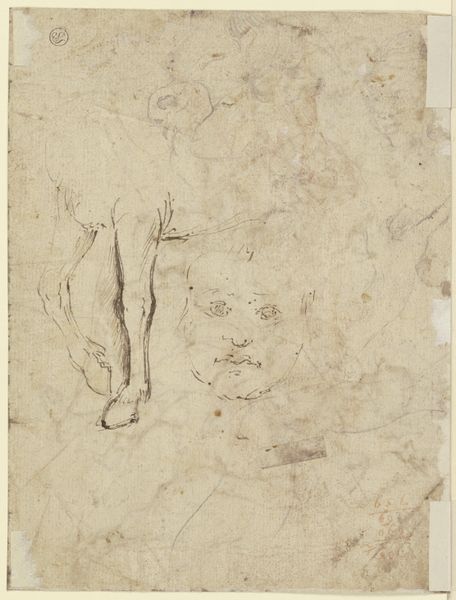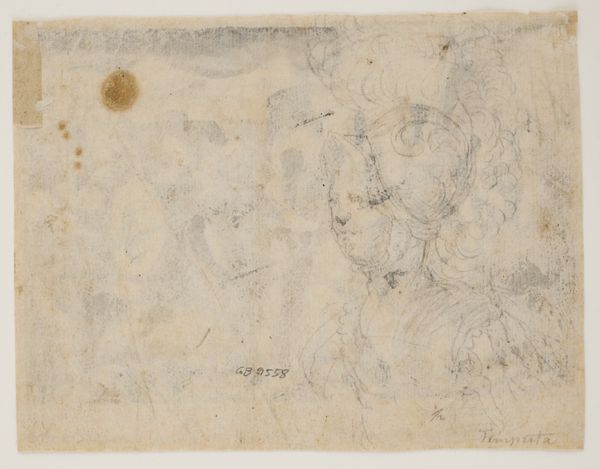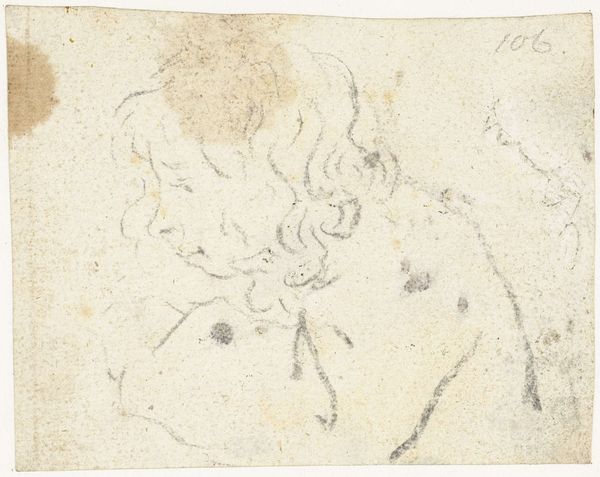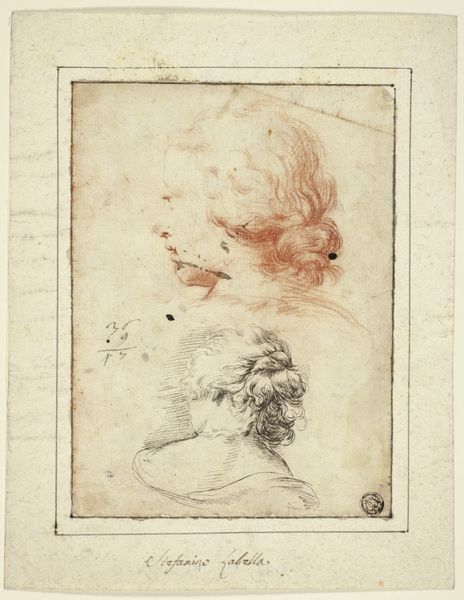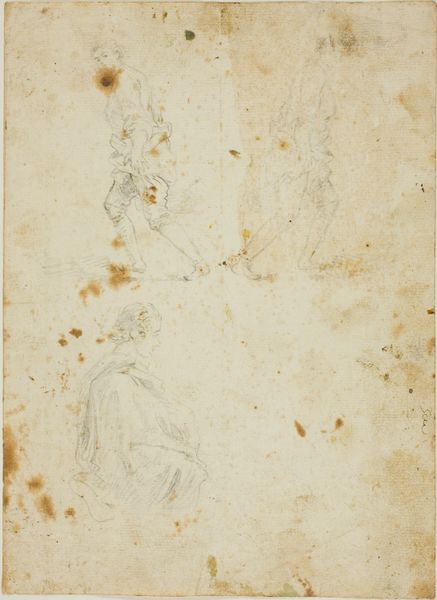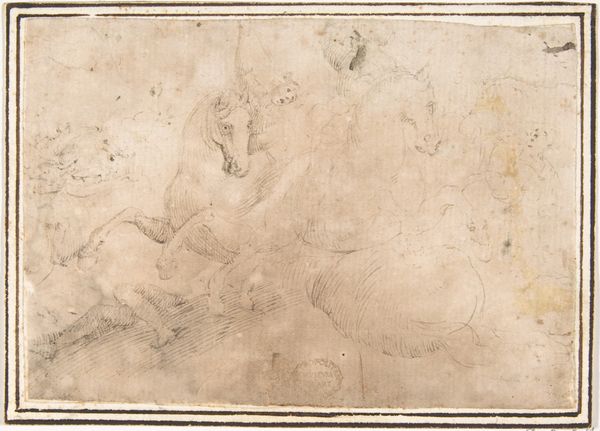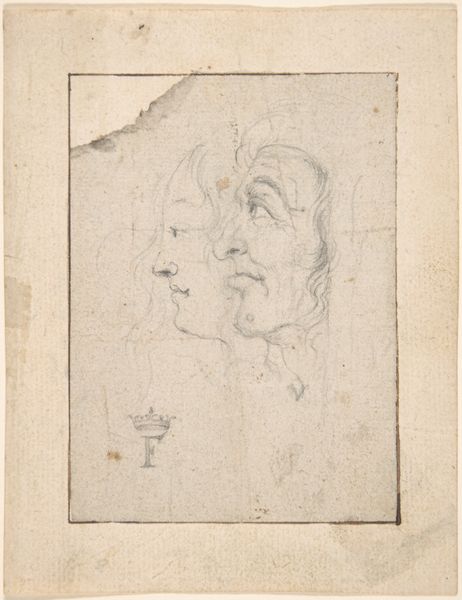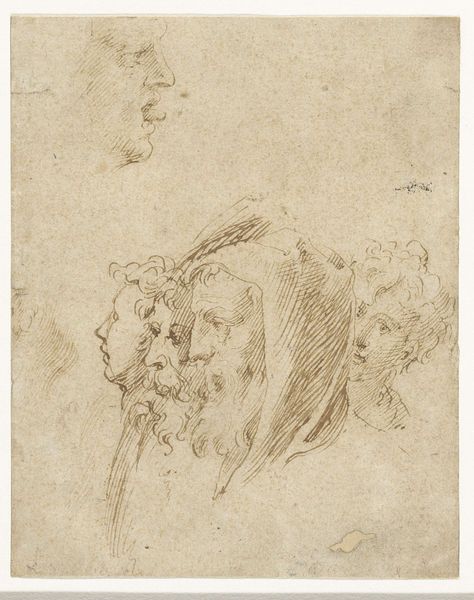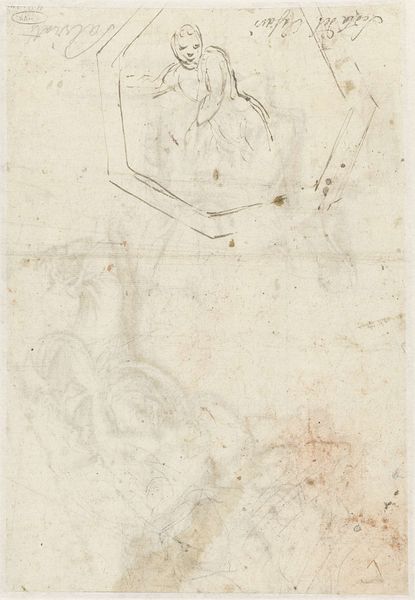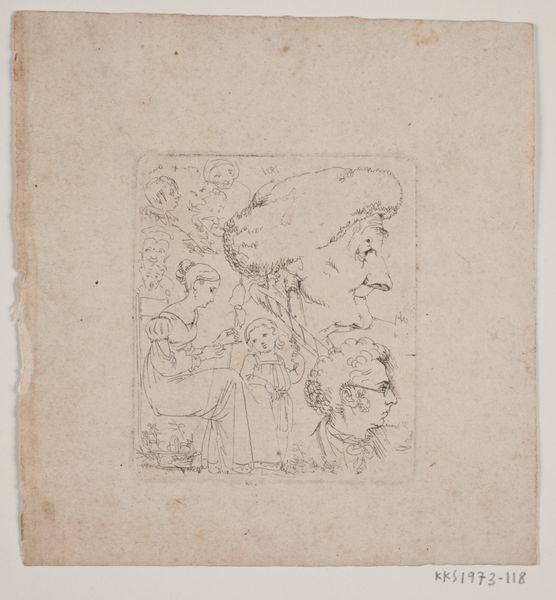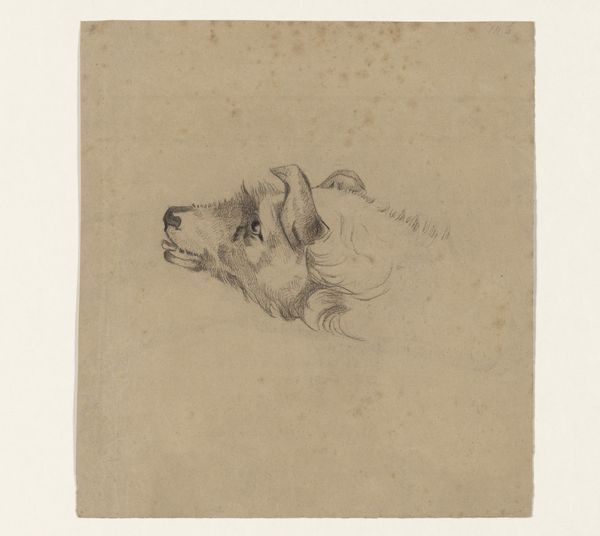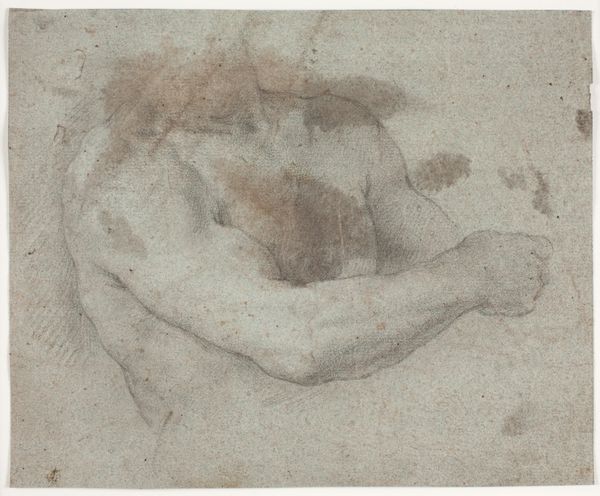
drawing, print, etching, graphite
#
portrait
#
drawing
# print
#
etching
#
etching
#
figuration
#
form
#
11_renaissance
#
line
#
graphite
#
italian-renaissance
Dimensions: 3 1/8 × 2 7/8 in. (7.94 × 7.3 cm) (sheet)
Copyright: Public Domain
Curator: I'm immediately drawn to the vulnerability in these faces; there's a palpable sense of introspection and melancholy hanging in the air. Editor: I agree, there's a quiet pensiveness. Shall we delve into this work? This is "Study of Three Heads" by Stefano della Bella, created around 1646. It’s currently held at the Minneapolis Institute of Art. We believe it’s an etching. Curator: It appears to be a preliminary study, or perhaps a page of sketches. The subjects are diverse, from the figure in military garb to what seems like a young woman, head bowed. This juxtaposition raises intriguing questions about identity and roles within the context of the time. The soldier’s portrait suggests power, while the others… what narratives do you perceive within these carefully rendered portraits? Editor: For me, it's primarily a formal exercise. Note the delicate linework—see how the artist utilizes cross-hatching to create volume and shadow? The economy of line is exquisite. Each head is presented with differing degrees of completion, almost like a demonstration of technique. The man wearing a helmet to the side is in partial profile, his armor boldly stroked, while the woman looking down possesses softer facial features rendered with delicate hatching. The third study is an exercise in textural complexity with bolder linework and curly hair that’s much more animated. Curator: True, but let’s not dismiss the human element completely. The head that is tilted downward – notice the posture of submission and internalized pain, maybe remorse? Even in a sketch, those symbols are hard to ignore, giving more weight to the image. The artist’s cultural context – what psychological burden was imposed during this period in history? Perhaps each of these portraits, viewed collectively, could reflect elements from his own personal psyche. Editor: An interesting theory. Considering the artistic process, maybe he was less invested in some kind of deeper cultural reading. Perhaps he wanted to create images primarily in terms of composition, and tonal relations? Regardless, his etching technique serves an immediate communicative function. The varying degrees of line create contrast, but the overall tone is more delicate than bold, as his marks serve an image of pensivity overall. Curator: Ultimately, this print leaves us to reflect upon a very private viewing, a kind of intimate, internalized struggle. It’s about finding resonance from these historic visual images. Editor: Yes, della Bella invites us into his world, asking us to explore our subjective interpretations of those studies through the act of seeing itself.
Comments
No comments
Be the first to comment and join the conversation on the ultimate creative platform.
